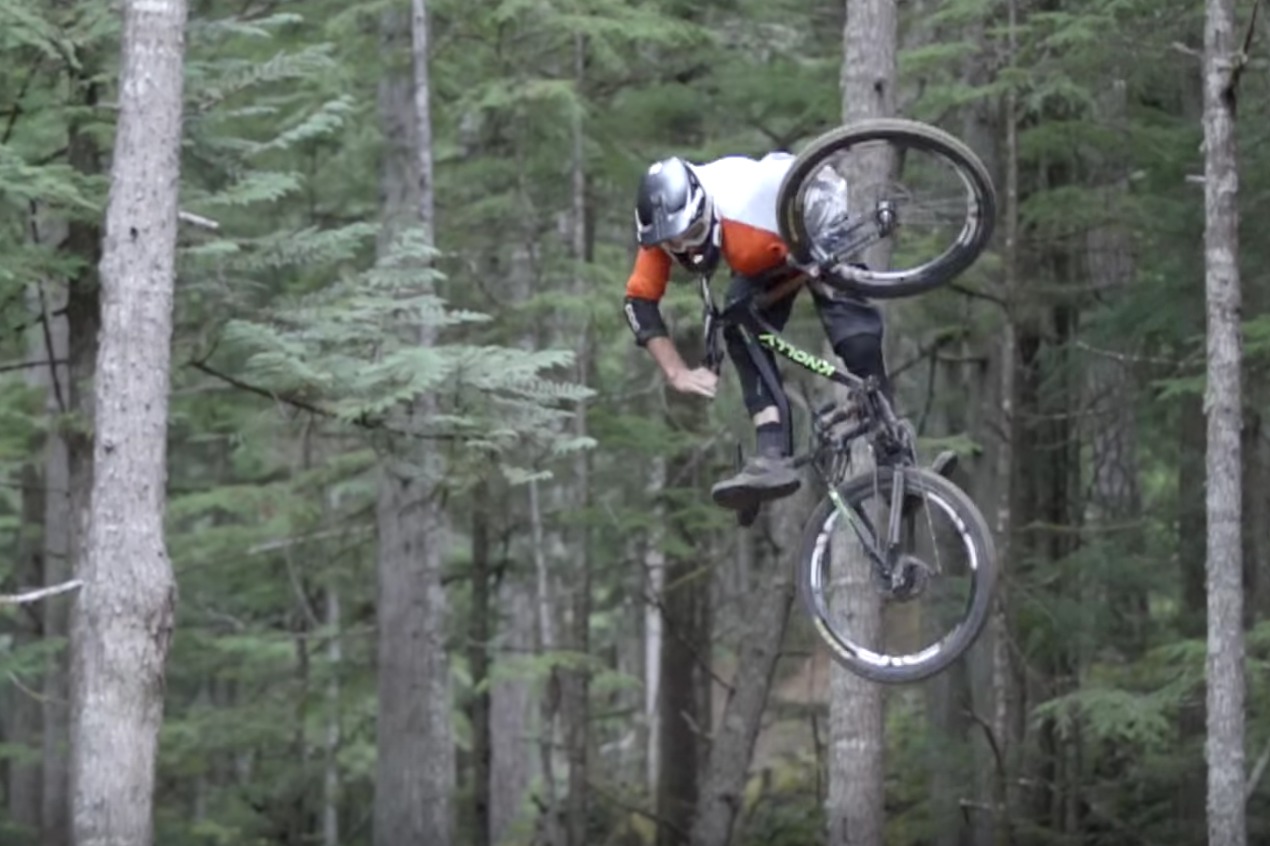[ad3]
We first spent some time aboard Eagle, SRAM’s 12 speed drivetrain in Squamish, BC during Trek’s Remedy launch. Always seeking to expand and improve the drivetrain experience for mountain bikers, SRAM pushed the envelope with a massive 10-50 tooth cassette and twelve speeds in both Eagle XX1 and Eagle X01 which are aimed at XC/Trail and All Mountain/Enduro respectively. Boasting a 500% range SRAM was confident that this would be the nail in the coffin for the front derailleur…To anyone who is in the market for a new drivetrain and doesn’t have an aversion spending some money, it most certainly is exactly that. Read on to see what we’ve learned after 6 months aboard the new drivetrain.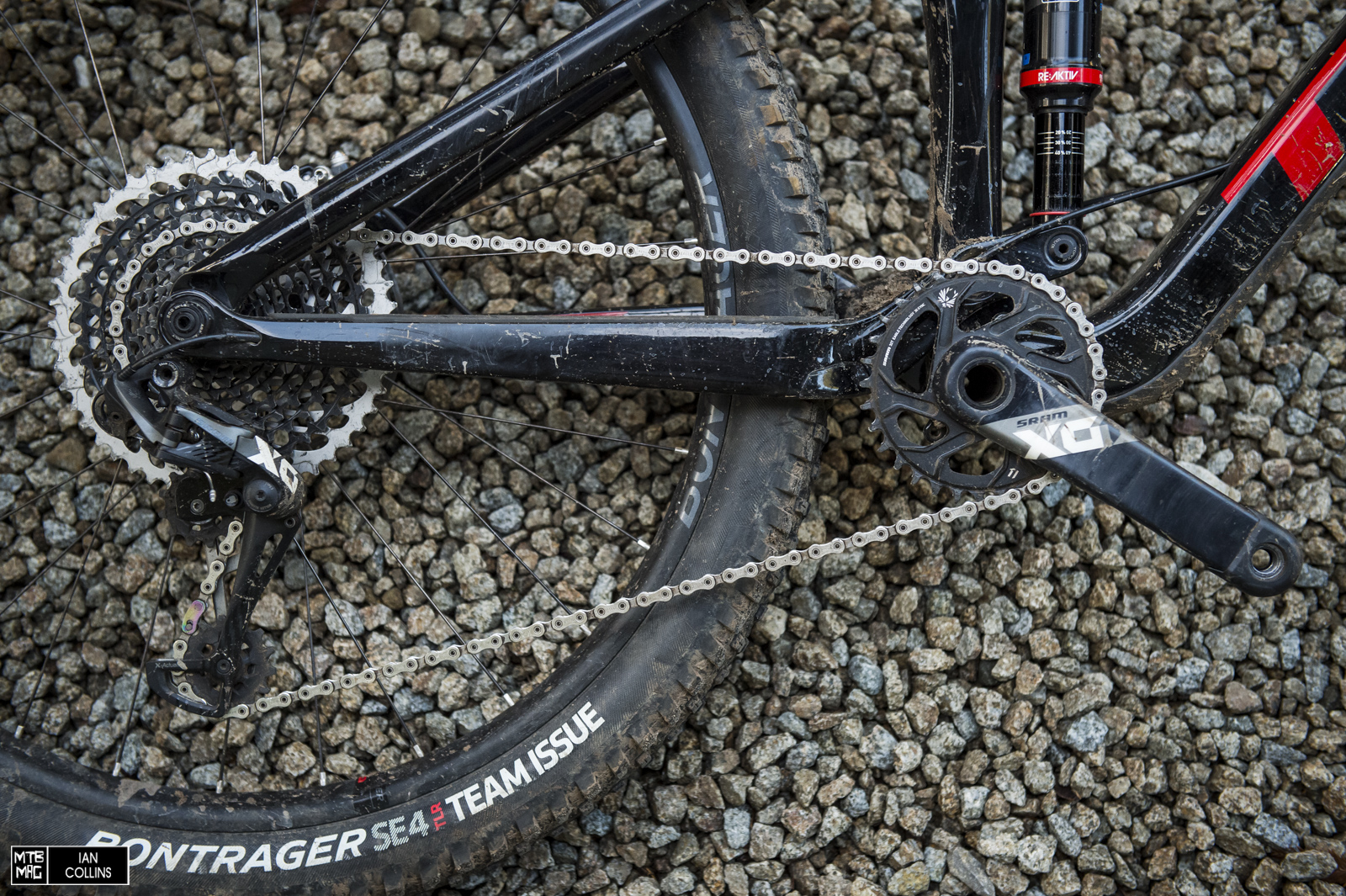
Details
• 1X specific
• 12 speeds – 10, 12, 14, 16, 18, 21, 24, 28, 32, 36, 42, 50
• $1157 USD
• ~1500 grams
• XD driver body only
• Grip or Trigger shifter options
• 500% range
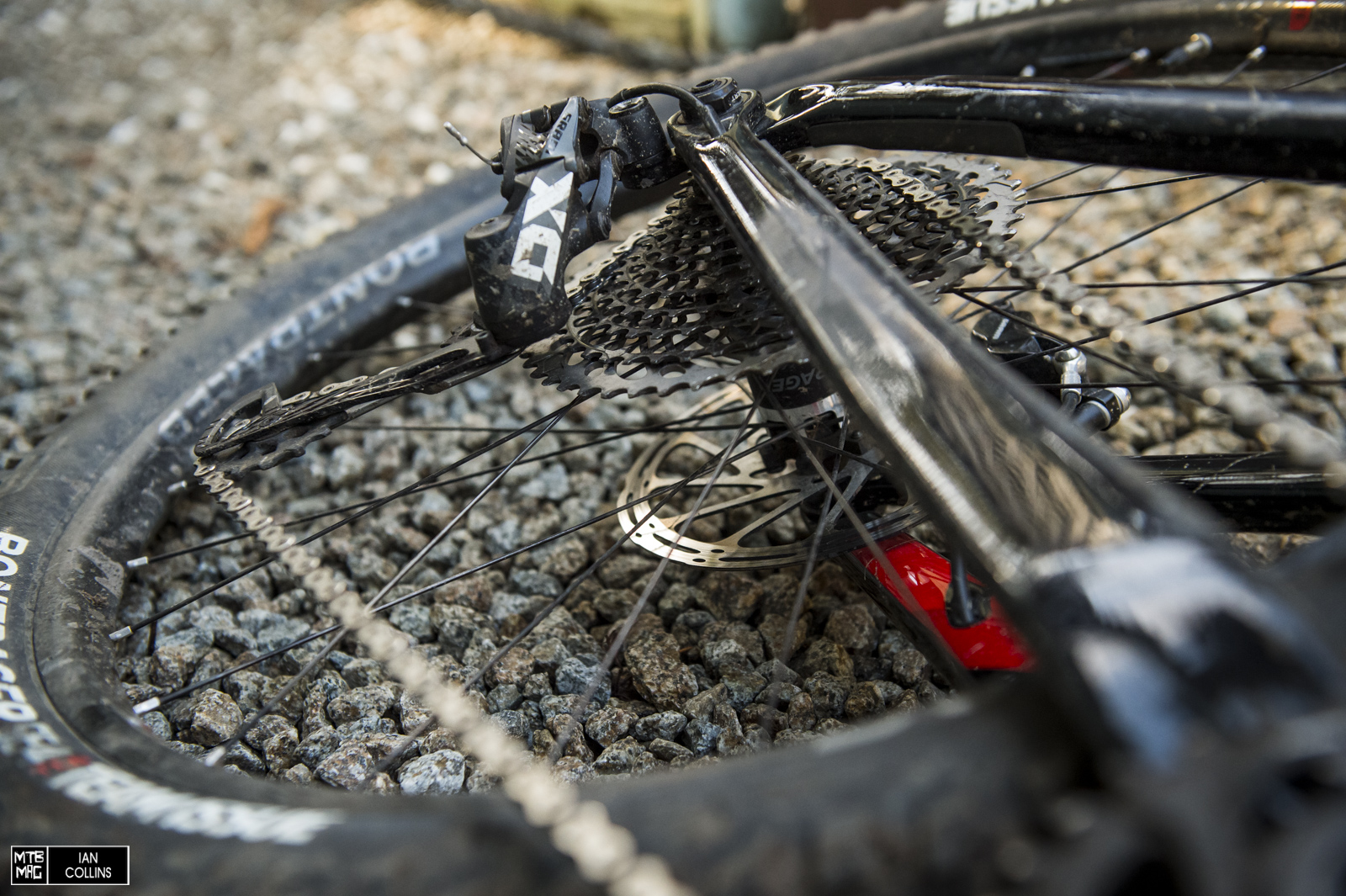 On first glance the massive 50 tooth gear jumps out more than anything, visually speaking. It simply dwarfs the 42 tooth top gear on the XX1 of old, which 3 years ago dwarfed the 36 tooth top gear that die hard 1X drivetrain riders were accustomed to. Under closer inspection you’ll notice subtle changes to the tooth profile on the direct mount X-Sync chainring. The teeth have taken on a hooked shape and they’ve gotten quieter when pedaling at the far ends on the gear range; particularly on bikes with less than ideal chainlines. The X01 crankset is still featherweight and made of carbon fiber with a foam core, yet strong enough that it’s rated to handle the rigors of Enduro racing. The crankset available in both 170mm and 175mm lengths and is available to fit just about any current MTB frame’s BB width/style.
On first glance the massive 50 tooth gear jumps out more than anything, visually speaking. It simply dwarfs the 42 tooth top gear on the XX1 of old, which 3 years ago dwarfed the 36 tooth top gear that die hard 1X drivetrain riders were accustomed to. Under closer inspection you’ll notice subtle changes to the tooth profile on the direct mount X-Sync chainring. The teeth have taken on a hooked shape and they’ve gotten quieter when pedaling at the far ends on the gear range; particularly on bikes with less than ideal chainlines. The X01 crankset is still featherweight and made of carbon fiber with a foam core, yet strong enough that it’s rated to handle the rigors of Enduro racing. The crankset available in both 170mm and 175mm lengths and is available to fit just about any current MTB frame’s BB width/style.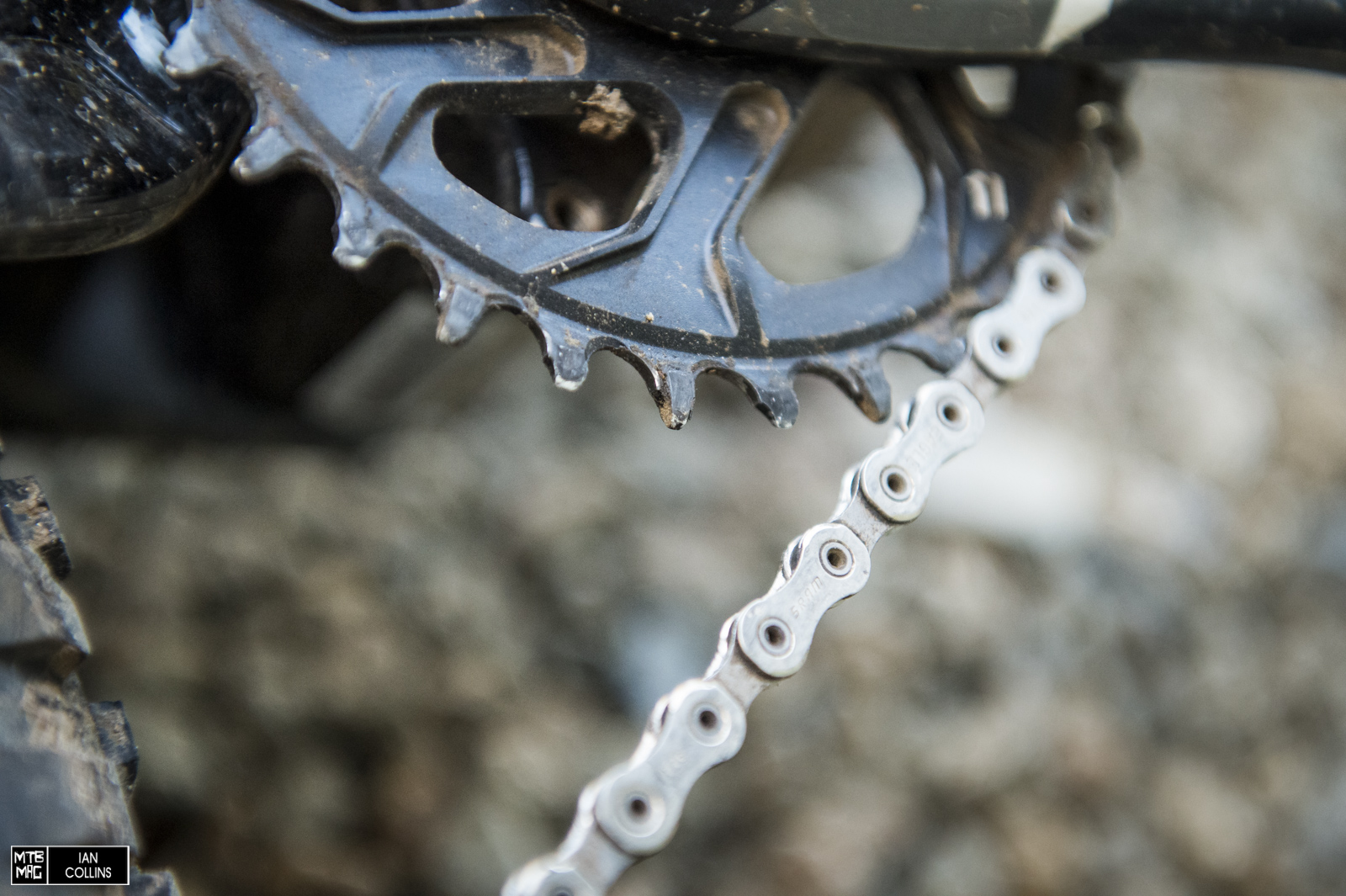 The X01 shifter is relatively unchanged aside from the extra click required to move across the range. It executes up to 5 shifts at a time moving up but just one shift at a time moving down. The X01 shifter has the same comfortable, familiar ergonmics at both the paddle and trigger that we’ve grown fond of over the years. The option to integrate clamping real estate with SRAM brakes is still there and you have two different settings for inboard/outboard placement. Lastly, one of our favorite features is the adjustable angle of the thumb paddle via a 3mm allen key.
The X01 shifter is relatively unchanged aside from the extra click required to move across the range. It executes up to 5 shifts at a time moving up but just one shift at a time moving down. The X01 shifter has the same comfortable, familiar ergonmics at both the paddle and trigger that we’ve grown fond of over the years. The option to integrate clamping real estate with SRAM brakes is still there and you have two different settings for inboard/outboard placement. Lastly, one of our favorite features is the adjustable angle of the thumb paddle via a 3mm allen key.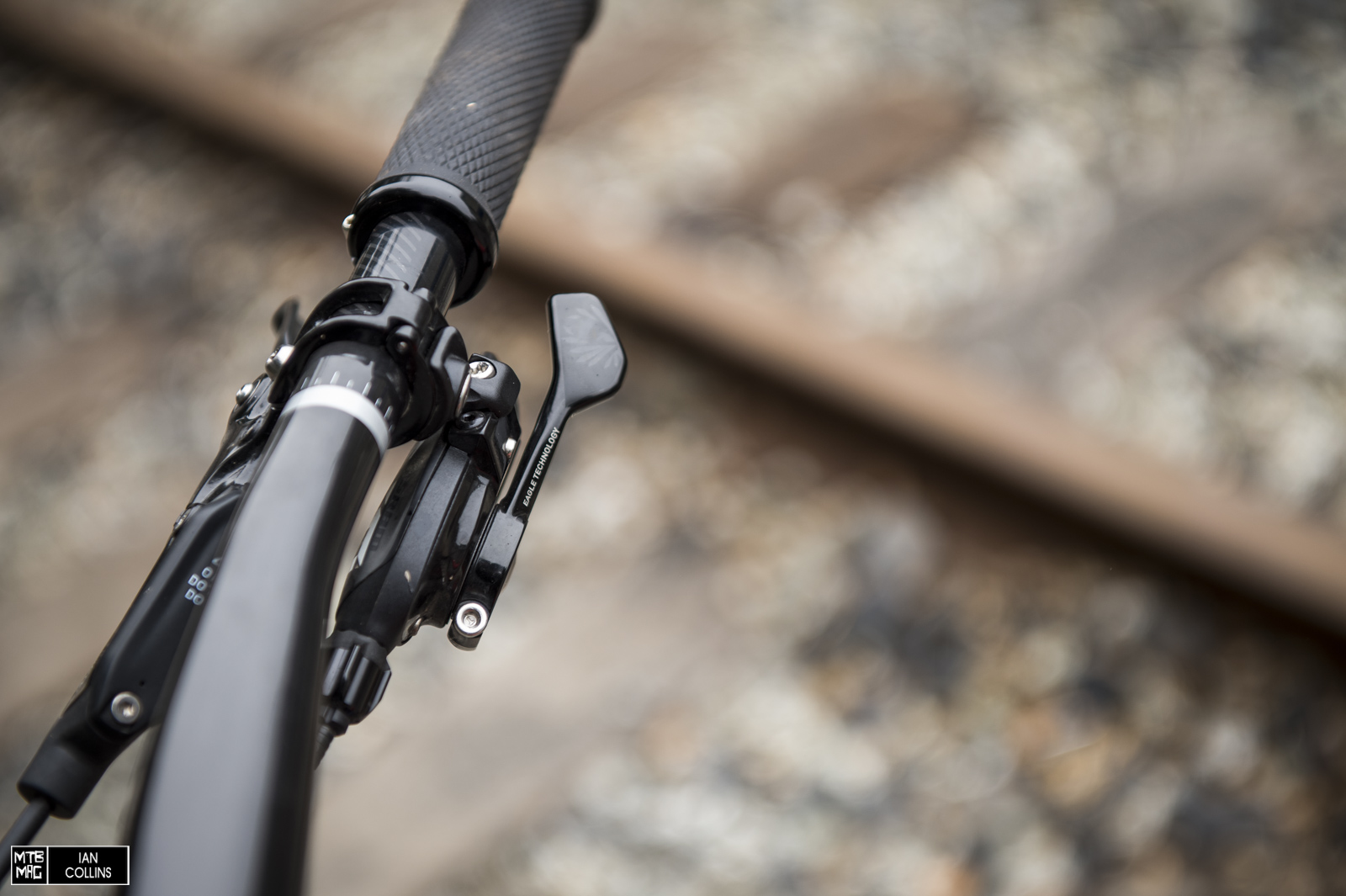 Out back the rear derailleur has seen some significant changes. The B-knuckle forging which houses the derailleur attachment bolt has seen a big improvement. On older derailleur models the mounting bolt had a tendency to back out and unthread, particularly in rowdy terrain. This has been updated and re-engineered to stay put. The lower pulley has gotten larger by two teeth and the upper pulley no longer features a narrow/wide design. Because the upper pulley is placed inside of a cage and sandwiched between the cassette and the lower pulley, the narrow/wide profile on past upper pulleys likely wasn’t all that necessary in assisting with chain retention. We assume that going back to a standard tooth profile may have helped make the shifting more seamless and possibly quieter.
Out back the rear derailleur has seen some significant changes. The B-knuckle forging which houses the derailleur attachment bolt has seen a big improvement. On older derailleur models the mounting bolt had a tendency to back out and unthread, particularly in rowdy terrain. This has been updated and re-engineered to stay put. The lower pulley has gotten larger by two teeth and the upper pulley no longer features a narrow/wide design. Because the upper pulley is placed inside of a cage and sandwiched between the cassette and the lower pulley, the narrow/wide profile on past upper pulleys likely wasn’t all that necessary in assisting with chain retention. We assume that going back to a standard tooth profile may have helped make the shifting more seamless and possibly quieter.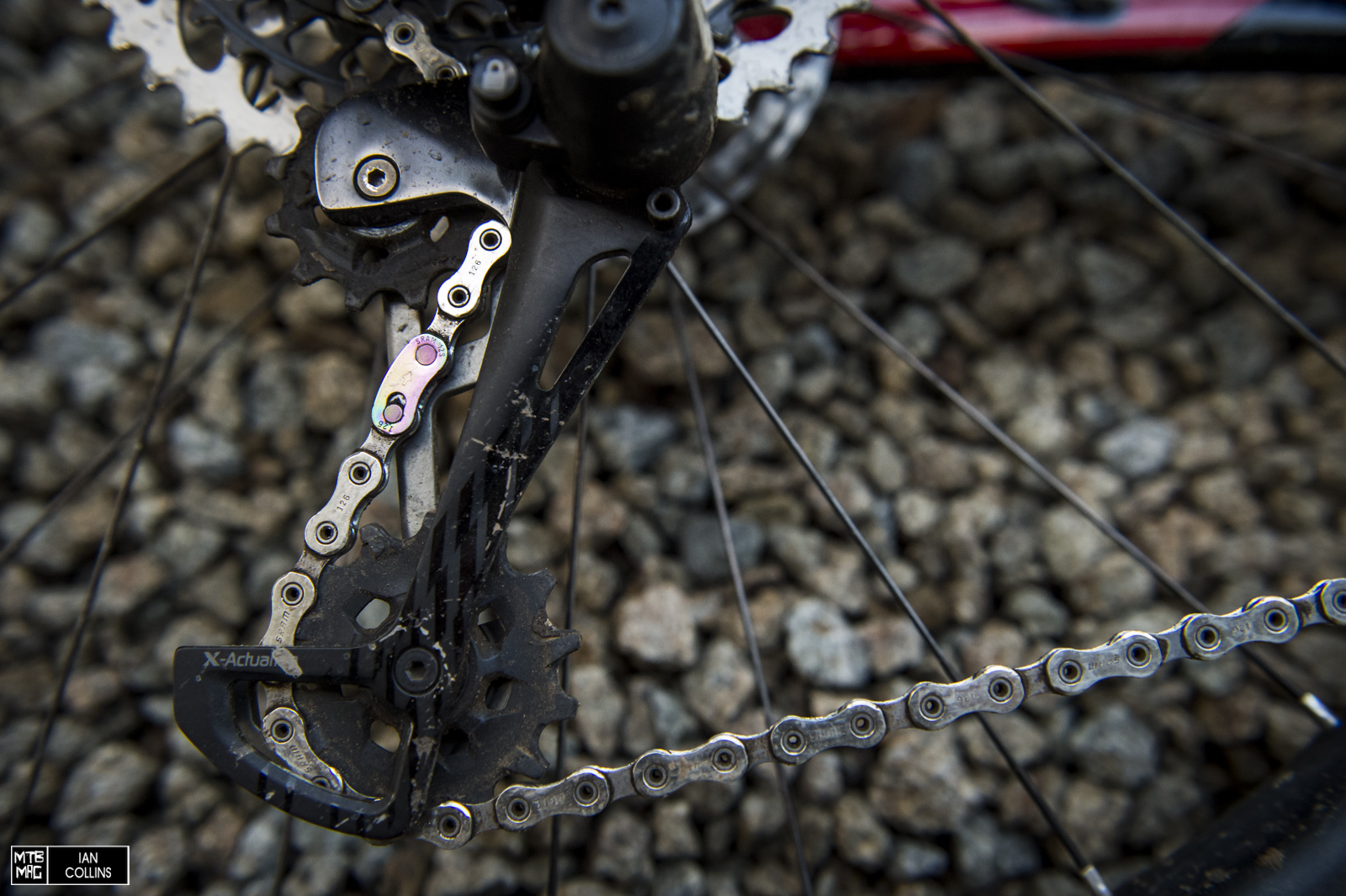 The derailleur has lost some ground clearance due to its cage which now has to take up a significantly larger amount of chain wrap. Fortunately it is at its longest when you’re be climbing, not when you’re bombing through obstacle strewn trails. As far as profile goes, SRAM have done an excellent job at ensuring the derailleur is as sleek and tucked away as possible. One final note is that although slightly narrower, the chain physically looks nearly the same as its 11 speed counterpart but now features an easy to spot, irridescent quick link(shown above) that has taken on a rather interesting curved shape.
The derailleur has lost some ground clearance due to its cage which now has to take up a significantly larger amount of chain wrap. Fortunately it is at its longest when you’re be climbing, not when you’re bombing through obstacle strewn trails. As far as profile goes, SRAM have done an excellent job at ensuring the derailleur is as sleek and tucked away as possible. One final note is that although slightly narrower, the chain physically looks nearly the same as its 11 speed counterpart but now features an easy to spot, irridescent quick link(shown above) that has taken on a rather interesting curved shape.
Setup & First Impressions
As far as installation and adjustments go, Eagle isn’t dramatically different from XX1, or any other drivetrain for that matter. With the massive range however, it does become increasingly important to set all of the adjustments within the correct parameters. Particularly the B-gap, by way of the adjusting the B-Tension screw using the Eagle chain gap tool as a guide. Below is a quick video of Sean “Wizard” Cruickshanks giving us a quick run down on accomplishing the correct setup.
It’s worth pointing out that with increasing numbers of gears, drivetrains in general become more sensitive to proper derailleur hanger alignment. We’re not saying you need to rush out and buy one of these, but it wouldn’t hurt to have one, especially if you’ve got a tendency to have run-ins with trailside obstacles and debris. The bottom line is just keep an eye on your hanger if you want everything functioning smoothly, and if things go awry check the alignment before you get too ham fisted with things like cable tension and limit screws. Lastly, nicely lubed cables and properly trimmed housing goes a long ways as well.
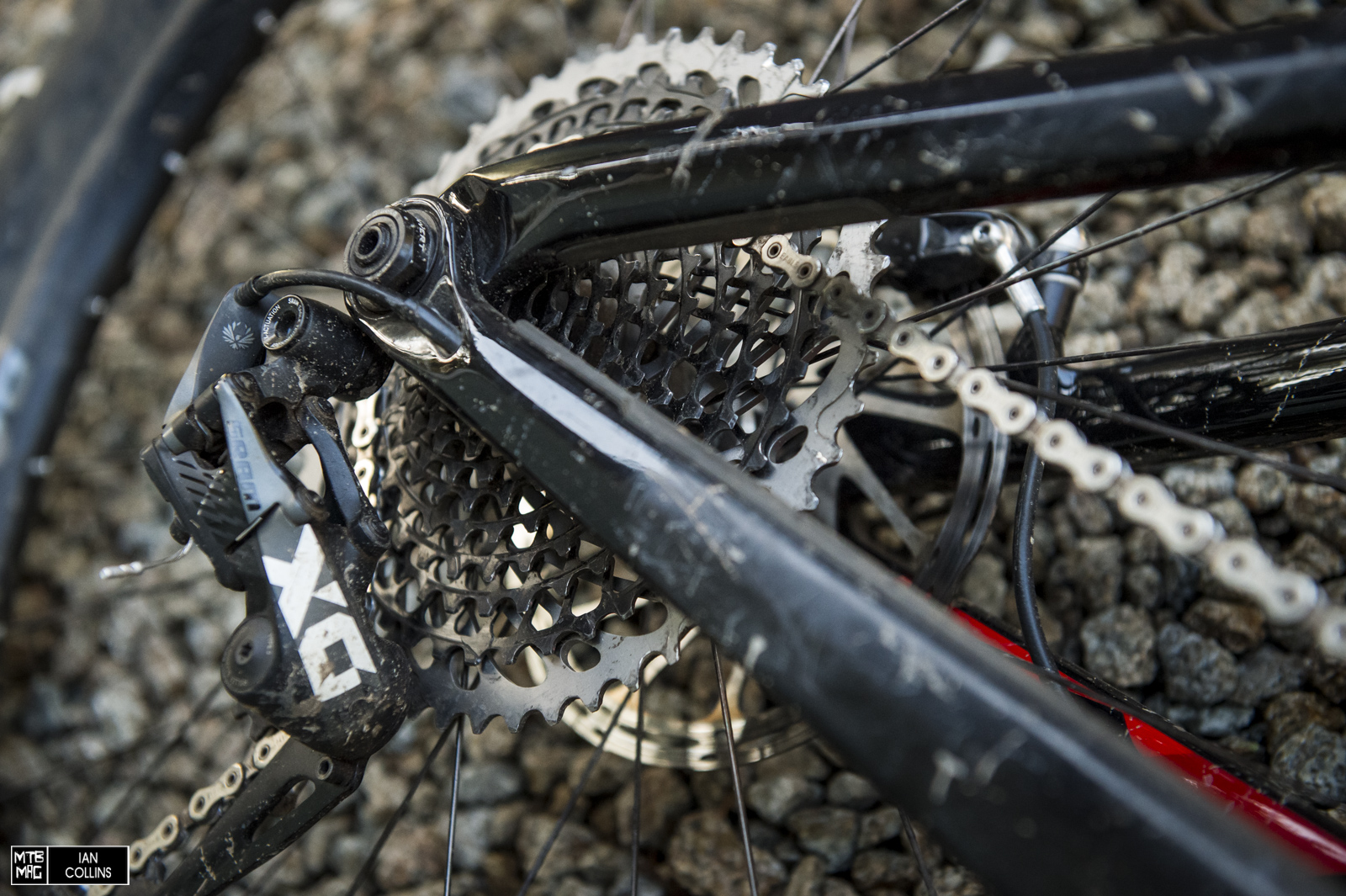 Upon a brief parking lot pedal, we were immediately scratching our heads, wondering how on earth this drivetrain could shift so quickly, crisply and accurately. To compare to XX1( an already excellent group) we think there has actually been an overall improvement in the shifting. Clearly it’s the subtle updates that have made Eagle such a highly functional drivetrain. Anyhow, let’s see how the big bird fared once we left the parking lot and got it dirty.
Upon a brief parking lot pedal, we were immediately scratching our heads, wondering how on earth this drivetrain could shift so quickly, crisply and accurately. To compare to XX1( an already excellent group) we think there has actually been an overall improvement in the shifting. Clearly it’s the subtle updates that have made Eagle such a highly functional drivetrain. Anyhow, let’s see how the big bird fared once we left the parking lot and got it dirty.
On the Trail
Perhaps the most controversial talking point regarding Eagle is whether or not the bold claims of relegating the front derailleur to the dark ages actually holds water. What’s most important is not just the total range(500%) but how that range is used. After our first jaunt we noticed that we spent most of our time climbing in the 28, 32, 36 & 42 tooth gears depending on the terrain. This is fairly in line with the gears we used on XX1 while climbing. For sake of reference we’re drawing comparisons between two 27.5″ wheeled bikes and we used a 32 tooth chainring with both bikes so leverage and gear ratios are identical.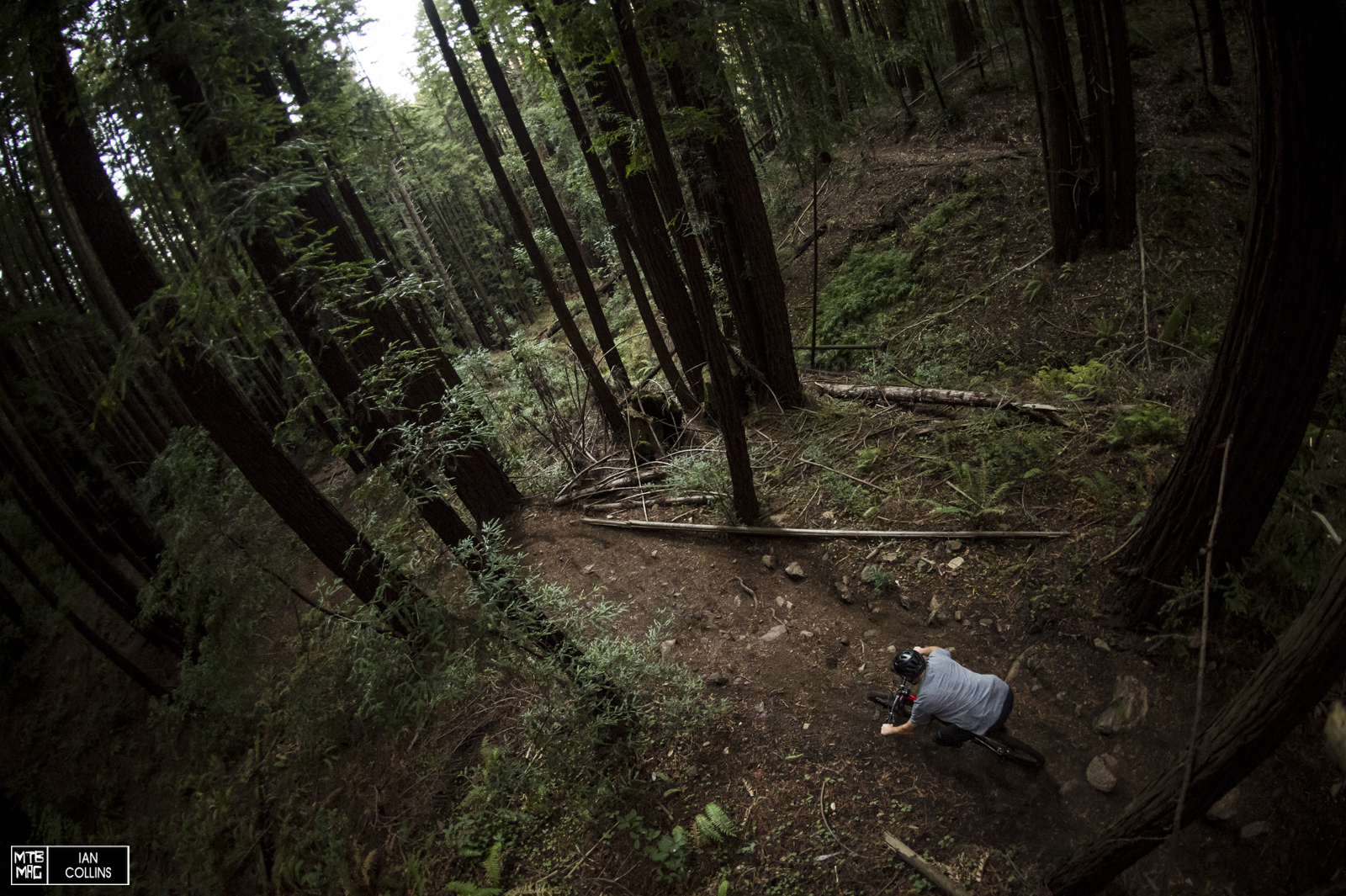 We quickly found that we rarely used the 50 tooth gear out back and when we did it was only on the steepest of sections or toward the tail end of a big ride when we were totally gassed. In those moments we sure did appreciate the huge gear and it certainly saved us energy by preventing multiple dismounts. Despite the fact that it’s a massive 8 tooth jump between the 42 and 50 tooth gears, the transition back and forth was shockingly rapid and smooth although slightly audible. We can say with certainty that anything larger than a 50 tooth would be downright unnecessary as it would almost be difficult to balance on the bike while pedaling with such low resistance. As most have already coined the massive singular aluminum pie plate, it truly is a “bail out gear”…Back when we rode drivetrains with a front derailleur, we were almost always finding ourselves in the larger ring up front, then we’d drop down to the granny gear when confronted with a mean climb or if we were completely flogged. What makes Eagle special is that 1X riders get the best of both worlds without the extra, unnecessary componentry and weight – you get the smart, usable range of XX1 plus the “bail out” that you may have sometimes missed from 2X drivetrains. This is especially nice on heavier, longer travel bikes.
We quickly found that we rarely used the 50 tooth gear out back and when we did it was only on the steepest of sections or toward the tail end of a big ride when we were totally gassed. In those moments we sure did appreciate the huge gear and it certainly saved us energy by preventing multiple dismounts. Despite the fact that it’s a massive 8 tooth jump between the 42 and 50 tooth gears, the transition back and forth was shockingly rapid and smooth although slightly audible. We can say with certainty that anything larger than a 50 tooth would be downright unnecessary as it would almost be difficult to balance on the bike while pedaling with such low resistance. As most have already coined the massive singular aluminum pie plate, it truly is a “bail out gear”…Back when we rode drivetrains with a front derailleur, we were almost always finding ourselves in the larger ring up front, then we’d drop down to the granny gear when confronted with a mean climb or if we were completely flogged. What makes Eagle special is that 1X riders get the best of both worlds without the extra, unnecessary componentry and weight – you get the smart, usable range of XX1 plus the “bail out” that you may have sometimes missed from 2X drivetrains. This is especially nice on heavier, longer travel bikes.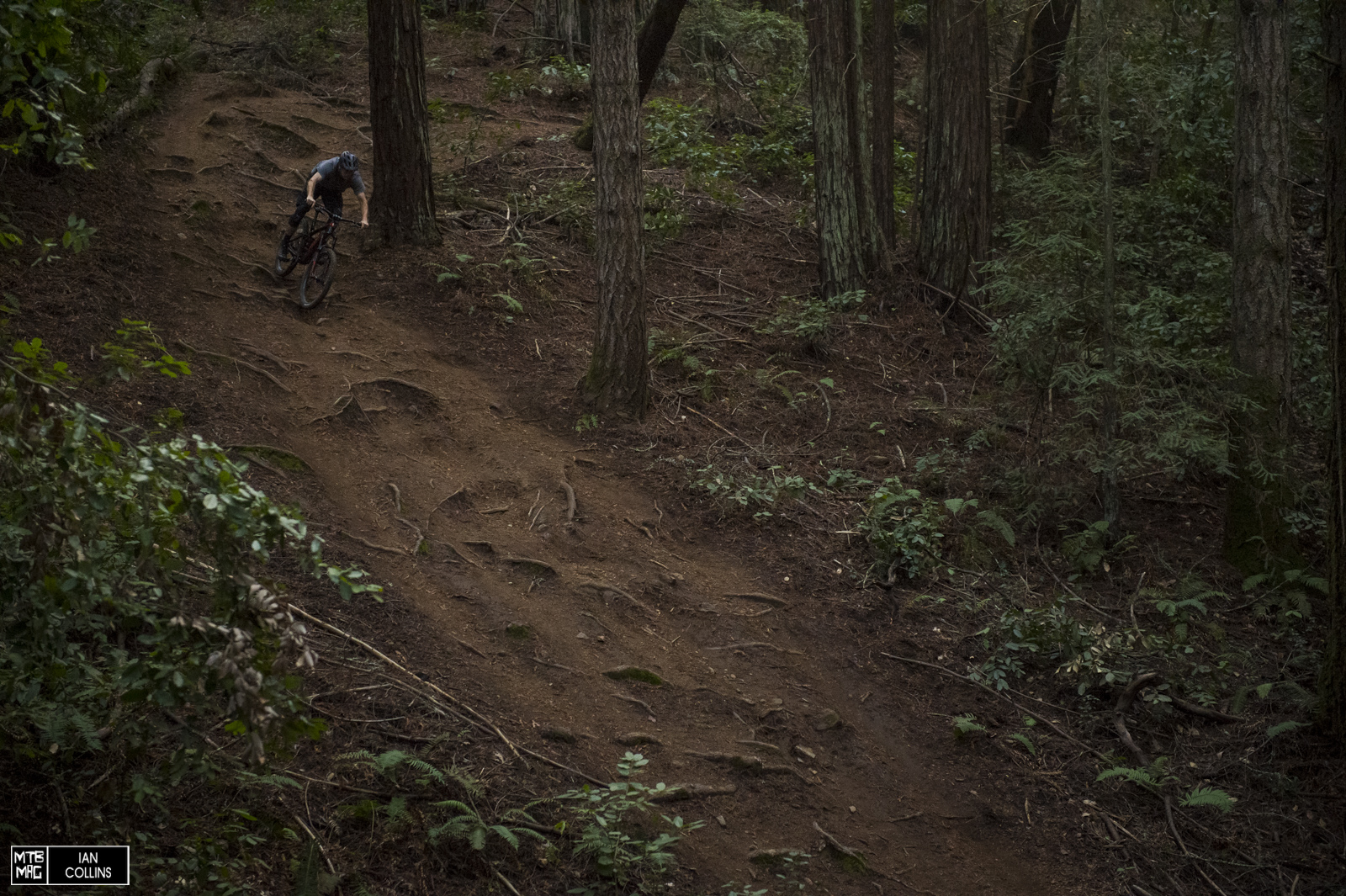 So, what do we mean by usable range? If you look around you’ll see a great deal of hop up kits from various brands offering huge range for 10 and 11 speed drivetrains for less money than this new 12 speed range…Remember, anything that sounds too good to be true usually is. The problem with the aforementioned 3rd party components is that quite often you’ll find yourself pedaling up a climb, unable to find the right gear to suit the cadence and output that feels right. That’s because some of the jumps between gears out back are too broad as the cassette is covering too broad of a range without enough gears. This is where having 12 speeds comes into play and spreads the gearing out more evenly. SRAM have done an excellent job of honing in on the perfect curve throughout the Eagle cassette’s range. Never in our 6 months aboard the drivetrain were we wishing for that “gear in between gears.” This is what Eagle offers that others don’t, and we see that as being extremely beneficial for not only racers but recreational riders as well.
So, what do we mean by usable range? If you look around you’ll see a great deal of hop up kits from various brands offering huge range for 10 and 11 speed drivetrains for less money than this new 12 speed range…Remember, anything that sounds too good to be true usually is. The problem with the aforementioned 3rd party components is that quite often you’ll find yourself pedaling up a climb, unable to find the right gear to suit the cadence and output that feels right. That’s because some of the jumps between gears out back are too broad as the cassette is covering too broad of a range without enough gears. This is where having 12 speeds comes into play and spreads the gearing out more evenly. SRAM have done an excellent job of honing in on the perfect curve throughout the Eagle cassette’s range. Never in our 6 months aboard the drivetrain were we wishing for that “gear in between gears.” This is what Eagle offers that others don’t, and we see that as being extremely beneficial for not only racers but recreational riders as well.
Overall
To sum up our on trail experience, functionally Eagle X01 didn’t just deliver, it exceeded expectations. Each shift was carried out with seamless precision and speed. The derailleur’s clutch and the chainring’s improved tooth profile have worked in unison flawlessly, keeping our chain on sans chainguide even in the roughest terrain and muddiest conditions. This is extra impressive considering they are managing a longer chain which covers more gearing. The crankset, and whole group for that matter is lightweight, strong and durable. If we had to dig deep and find something to quip about it’s that you need to be extra careful with setup, adjustments and maintenance to get the most out of it…a relatively small tweak to the derailleur hanger or a gummed up cable can throw things off pretty easily. This should come as no surprise as we’re now fitting 12 gears in the same space we once fit 10 but it’s a small price to pay considering you eliminate an unnecessary shifter, cable, derailleur and chainring from your bike all in one fell swoop – no pun intended.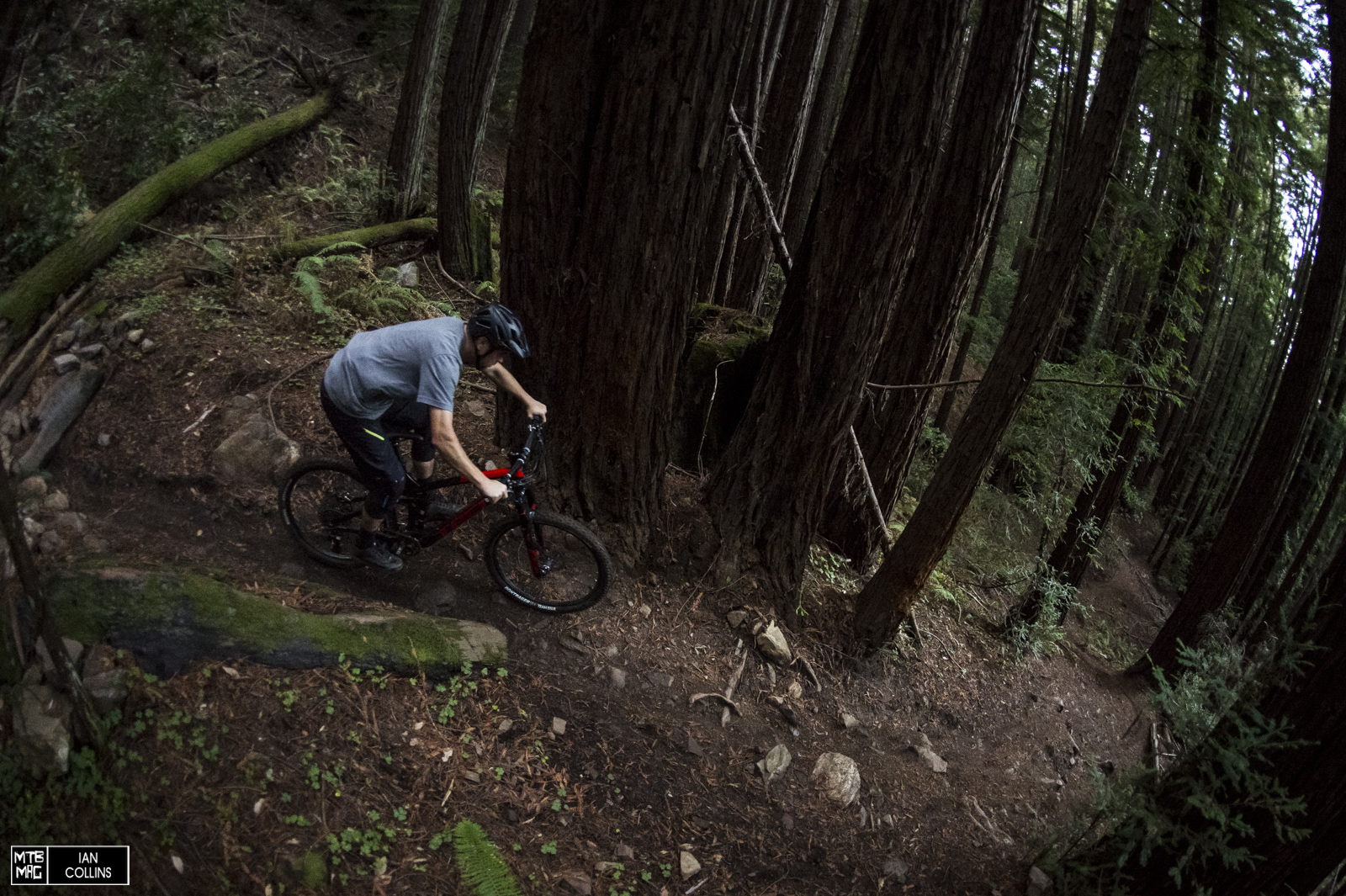 For us, the Eagle X01 drivetrain has proven to deliver flawlessly regardless of conditions. However pricey Eagle is, just remember that in years past SRAM have worked tirelessly to gradually bring ground-breaking technology to the masses at more and more affordable levels over time. Most importantly, what makes Eagle worth the coin is not simply the 50T life saver gear, but the fact that the other eleven gears are spread out across a perfect curve ensuring that you always find the right ratio; something that 3rd party hop up kits don’t really offer. Lastly, it’s the sum of the parts that makes this drivetrain work so well. SRAM’s motto is “Incremental enhancements, perpetual improvements.” That ethos clearly rings true with Eagle; their relentless tweaking and subtle improvements are what brought us here…To the funeral of the front deraillur.
For us, the Eagle X01 drivetrain has proven to deliver flawlessly regardless of conditions. However pricey Eagle is, just remember that in years past SRAM have worked tirelessly to gradually bring ground-breaking technology to the masses at more and more affordable levels over time. Most importantly, what makes Eagle worth the coin is not simply the 50T life saver gear, but the fact that the other eleven gears are spread out across a perfect curve ensuring that you always find the right ratio; something that 3rd party hop up kits don’t really offer. Lastly, it’s the sum of the parts that makes this drivetrain work so well. SRAM’s motto is “Incremental enhancements, perpetual improvements.” That ethos clearly rings true with Eagle; their relentless tweaking and subtle improvements are what brought us here…To the funeral of the front deraillur.


